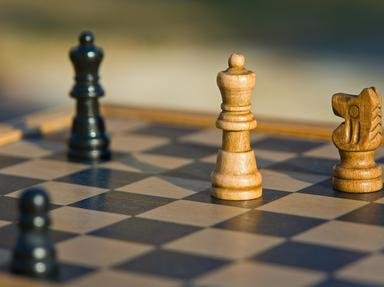Quiz Answer Key and Fun Facts
1. A Knight leaps in a path of 2,1 and can generally hold a draw against a rook. Which of these fairy chess pieces can also generally hold a draw against a rook?
2. If chess had pieces that moved the same as their kings, but could be captured like any other piece, then how would their value compare to the value of a rook?
3. A piece that moves like both rook and knight is useful against ______ and is preferred over a queen when playing against them.
4. Make this a true statement: A king, bishop, and ______ can generally force checkmate against a lone king on an 8x8 chessboard.
5. Make this a true statement.
A king, a knight, and ________ can generally force checkmate against a lone king on an 8x8 board.
6. A piece that leaps in the path of 4,1 can potentially access every square on an infinitely large chessboard. What fraction of an infinitely large chessboard, would it be able to potentially access, if its move choices were cut in half so that it was only allowed to make 4,1 leaps where each leap path is either parallel or perpendicular to all of its past moves?
7. After a knight moves three times, it is possible for it to end up on a square adjacent to its starting square. Example with N on g8 (Nf6 Nh7 Nf8).
On a 3D chessboard, what x,y,z leaper can move three times and end up on a square adjacent to its starting square?
8. A king and a piece that can leap like both ____________ can generally force checkmate against a lone king on an 8x8 chessboard.
9. A piece that leaps in the path of 3,2 can potentially access every square on an infinitely large chessboard. What fraction of an infinitely large chessboard, would it be able to potentially access, if it was only allowed to make 3,2 leaps where the 3 leap always goes north/south and 2 leap always goes east/west?
10. A piece that leaps in the path of 4,3 can potentially access every square on an infinitely large chessboard. What fraction of an infinitely large chessboard, would it be able to potentially access, if it was only allowed to make 4,3 leaps where both coordinates are positive or both are negative?
Source: Author
iggy4
This quiz was reviewed by FunTrivia editor
WesleyCrusher before going online.
Any errors found in FunTrivia content are routinely corrected through our feedback system.
